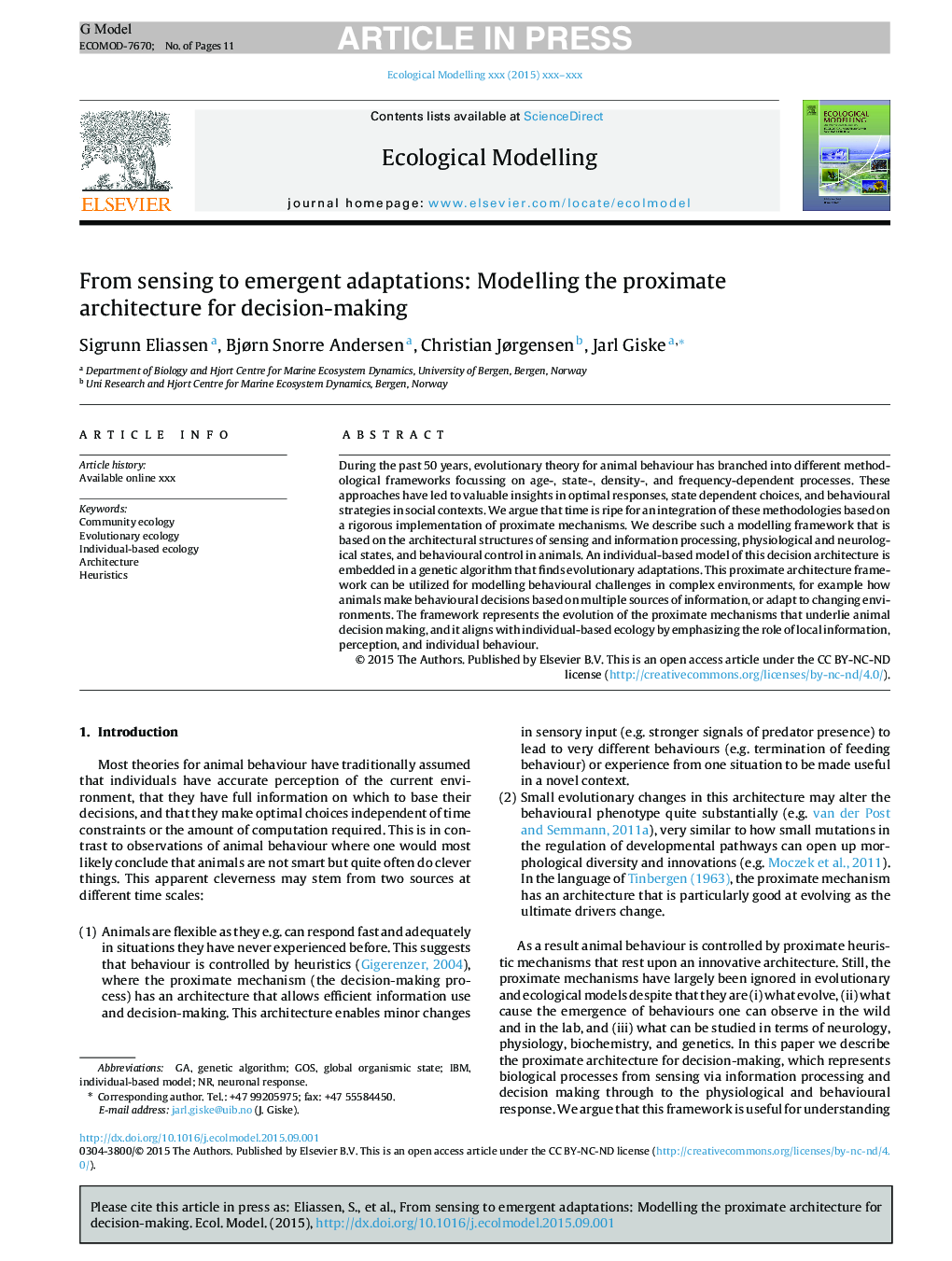| Article ID | Journal | Published Year | Pages | File Type |
|---|---|---|---|---|
| 6296343 | Ecological Modelling | 2016 | 11 Pages |
Abstract
During the past 50 years, evolutionary theory for animal behaviour has branched into different methodological frameworks focussing on age-, state-, density-, and frequency-dependent processes. These approaches have led to valuable insights in optimal responses, state dependent choices, and behavioural strategies in social contexts. We argue that time is ripe for an integration of these methodologies based on a rigorous implementation of proximate mechanisms. We describe such a modelling framework that is based on the architectural structures of sensing and information processing, physiological and neurological states, and behavioural control in animals. An individual-based model of this decision architecture is embedded in a genetic algorithm that finds evolutionary adaptations. This proximate architecture framework can be utilized for modelling behavioural challenges in complex environments, for example how animals make behavioural decisions based on multiple sources of information, or adapt to changing environments. The framework represents the evolution of the proximate mechanisms that underlie animal decision making, and it aligns with individual-based ecology by emphasizing the role of local information, perception, and individual behaviour.
Keywords
Related Topics
Life Sciences
Agricultural and Biological Sciences
Ecology, Evolution, Behavior and Systematics
Authors
Sigrunn Eliassen, Bjørn Snorre Andersen, Christian Jørgensen, Jarl Giske,
